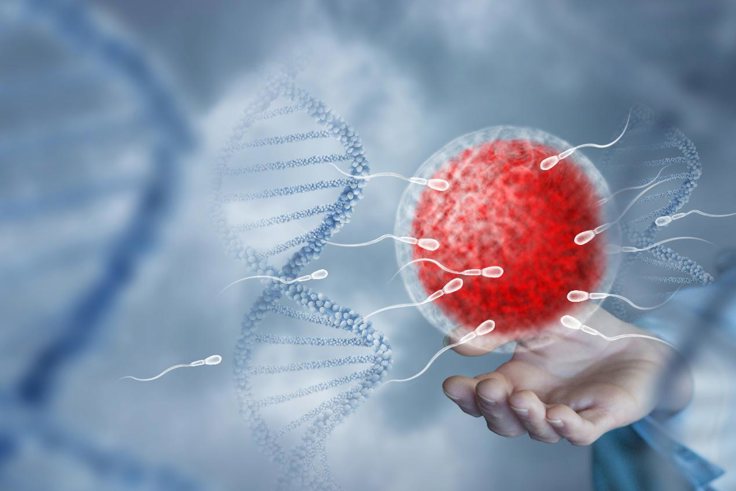Unlocking Fertility: How Sperm 'Rev Up' Energy for Success!
Approximately one in six couples worldwide face infertility, with male factors accounting for about half of these. Meanwhile, approximately 50% of pregnancies worldwide are unintended each year. These two major challenges share a common biological key: how does sperm "recharge"? How does it "sprint"? How can it precisely regulate its energy to complete its first marathon?
Recently, in a paper titled "Sperm Meets the Elevated Energy Demands to Attain Fertilization Competence by Increasing Flux Through Aldolase" published in the Proceedings of the National Academy of Sciences, scientists from Michigan State University and other institutions have uncovered the mysteries of sperm metabolic regulation. The paper not only maps the complete metabolic pathway of sperm from "dormant" to "overclocked", but also identifies the "traffic controller" that controls its energy output. This discovery could revolutionize infertility treatment and non-hormonal male contraception.

Sperm Also Has A "Standby Mode" And A "Racing Mode"
Before ejaculation, mammalian sperm rest quietly in the epididymis, in a low-energy "standby state". Once inside the female reproductive tract, they must rapidly activate "racing mode": accelerating their swimming, changing their membrane structure, and completing the "capacitation" process before finally fertilizing the oocyte. Professor Balbach explained that this rapid switch from a low-energy state to a high-energy state occurs in many cells, but sperm is an excellent model for studying this process.
To gain a clearer understanding of what's happening inside sperm, Balbach's team and others jointly developed a specialized "metabolic tracking" technique. They labeled glucose with stable isotopes, like painting a car roof bright pink, and then used mass spectrometry to "fly" these labeled molecules within the sperm.
The researchers report that in activated sperm, they observed this "pink sports car" moving faster on its metabolic path, taking different routes, and even identifying the intersections where it tends to get stuck.
Metabolic "Traffic Control": Who is the "Energy Commander" of Sperm?
Researchers have discovered that when activated, sperm significantly increases glycolytic efficiency, converting more glucose into energy while reducing metabolic flux through the pentose phosphate pathway. A key regulator of this process lies in an enzyme called aldolase, which acts like a highly efficient "traffic commander", activated during sperm capacitation and directing the accelerated flow of glucose into energy-producing pathways. Furthermore, the study revealed that: 1) in the sperm midpiece, which contains mitochondria, pyruvate enters the tricarboxylic acid (TCA) cycle, maximizing energy yield via oxidative phosphorylation; 2) in the principal piece of the flagellum, which lacks mitochondria, pyruvate is converted to lactate, simultaneously regenerating oxidized nicotinamide adenine dinucleotide (NAD+) to ensure continued glycolysis; and 3) sperm can even draw on endogenous energy source to feed TCA cycle intermediates.
From "Infertility" to "Contraception": A Scientific Breakthrough with Dual Potential
This research not only provides the most complete understanding of sperm metabolism but also demonstrates promising applications in two key areas: 1) Infertility diagnosis and assisted reproductive technology. By analyzing sperm metabolic pathways, researchers hope to develop more accurate infertility diagnostics and even optimize sperm pretreatment procedures for in vitro fertilization. 2) Non-hormonal male contraception. Traditional male contraceptives are mostly hormonally regulated, resulting in slow onset and significant side effects. The Balbach team's novel approach targets the "traffic control enzymes" in sperm metabolism, enabling on-demand, non-hormonal, and side-effect-free male contraception. This will provide men with more reproductive options while freeing women from the side effects of hormonal contraception.
Balbach stated that understanding glucose metabolism during sperm activation is an important first step. Next, they will explore whether these mechanisms also apply to human sperm. The researchers are currently investigating whether safely targeting a specific "traffic control enzyme" could lead to the development of non-hormonal contraceptives for both men and women.
Reference
- Violante, Sara, et al. "Sperm meet the elevated energy demands to attain fertilization competence by increasing flux through aldolase." Proceedings of the National Academy of Sciences 122.39 (2025): e2506417122.

Your email address will not be published. Required fields are marked *